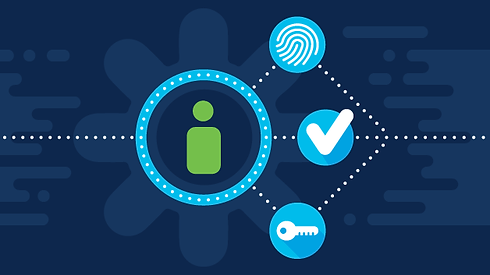
Security Services

Identity and Access
Management IAM
Identity and access management (IAM) will help the organization to provide the right access for the right people along with a secure way of focusing on managing user identities and access permissions on a computer network.
With IAM framework the policies, processes, and technologies can support verifying the identities.
IAM can help streamline access control in complex, multi-cloud environments. Today, corporate networks connect to on-premises, remote, and cloud-based (Sass) apps and data sources. A wide range of users needs access to these resources for various purposes, including human users (employees, customers, contractors) and non-human users (bots, IoT devices, automated workloads,APIs).



Security Privileged Access Manager (PAM)
Privileged access management (PAM) is an identity security solution that helps protect organizations against cyber threats by monitoring, detecting, and preventing unauthorized privileged access to critical resources.
PAM Security Secret Server is a repository that stores and manages Secrets, which are pieces of information about privileged accounts, for an enterprise system. Some examples of Secrets include passwords for routers, servers, and applications, SSL certificates, license keys, and spreadsheets. The Dashboard is the main screen of the user interface, and it is used for searching and viewing Secrets.
.png)
Next-Generation Firewall (NGFWs)
A firewall is a network security device that monitors incoming and outgoing network traffic and decides whether to allow or block specific traffic based on a defined set of security rules.
Firewalls have been a first line of defense in network security. And can establish a barrier between secured and controlled internal networks that can be trusted and untrusted outside networks, such as the Internet.
A firewall can be hardware, software, software-as-a-service (SaaS), public cloud, or private cloud (virtual).



ENDPOINT DETECTION AND RESPONSE (EDR)
EDR solutions record system activities and events taking place on endpoints and provide security teams with the visibility they need to uncover incidents that would otherwise remain invisible.
Effective EDR includes the following capabilities:
-
Incident data search and investigation
-
Alert triage or suspicious activity validation
-
Suspicious activity detection
-
Threat hunting or data exploration
-
Stopping malicious activity

Security Incident And Event Management (SIEM)
SIEM is a security solution that helps your organizations recognize potential security threats and vulnerabilities before they have a chance to disrupt business operations. It surfaces user behavior anomalies and uses artificial intelligence to automate many of the manual processes associated with threat detection and incident response and has become a staple in modern-day security operation centers (SOCs) for security and compliance management use cases
-
Threat Hunting and Detection
-
Reduced Response Time Using Enhance Situational Awareness Integration & Real-time Visibility
-
Security Staffing and Resources
-
Compliance Benefits


.png)
Data Security
We are helping organizations to protect digital information throughout its entire life cycle to protect it from corruption, theft, or unauthorized access. When properly implemented, robust data security strategies will protect an organization’s information assets against cybercriminal activities, but they also guard against insider threats and human error, which remain among the leading causes of data breaches today.
-
Encryption
-
Data Erasure
-
Data Masking
-
Data Resiliency
.png)
Security Convenience & Compliance (GRC)
Governance, Risk, and Compliance (GRC) is a structured way to align security with business goals while managing risks and meeting all industry and government regulations. It includes tools and processes to unify an organization's governance and risk management with its technological innovation and adoption. Companies use GRC to achieve organizational goals reliably, remove uncertainty, and meet compliance requirements.
-
Comply with National Cybersecurity Authority (NCA) requirements such as (Essential Cybersecurity Controls ECC-1:2018, Critical Systems Cybersecurity Controls, etc.)
-
Meet the requirements of the National Data Management Office (NDMO)
-
Helping the financial organization to comply with SAMA compliance.



Managed Security Services (MSS)
We are helping organizations that seek to outsource parts or all of their cybersecurity functions to a trusted security Company. Though out our cyber-security service, we offer the best practice for monitoring and managing security devices, systems, and even software-as-a-service (SaaS) applications by trusted parties.


.png)




.png)
.png)
